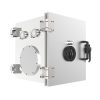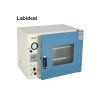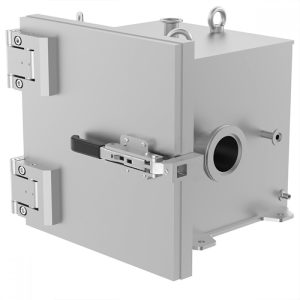Vacuum Chambers
A vacuum chamber is a rigid enclosure from which air and other gases are removed by a vacuum pump. This results in a low-pressure environment within the chamber, commonly referred to as a vacuum. A vacuum environment allows researchers to conduct physical experiments or to test mechanical devices which must operate in outer space (for example) or for processes such as vacuum drying or vacuum coating. Chambers are typically made of metals which may or may not shield applied external magnetic fields depending on wall thickness, frequency, resistivity, and permeability of the material used. Only some materials are suitable for vacuum use.
Chambers often have multiple ports, covered with vacuum flanges, to allow instruments or windows to be installed in the walls of the chamber. In low to medium-vacuum applications, these are sealed with elastomer o-rings. In higher vacuum applications, the flanges have knife edges machined onto them, which cut into a copper gasket when the flange is bolted on.
A type of vacuum chamber frequently used in the field of spacecraft engineering is a thermal vacuum chamber, which provides a thermal environment representing what a spacecraft would experience in space.
Vacuum chambers can be constructed of many materials. “Metals are arguably the most prevalent vacuum chamber materials.”[1] The strength, pressure, and permeability are considerations for selecting chamber material. Common materials are:
Stainless Steel
Aluminum
Mild Steel
Brass
High density ceramic
Glass
Acrylic
hard steel
Showing 1–12 of 65 results
window.dataLayer = window.dataLayer || [];
function gtag(){dataLayer.push(arguments);}
gtag(‘js’, new Date());
gtag(‘config’, ‘UA-172659890-1’);






